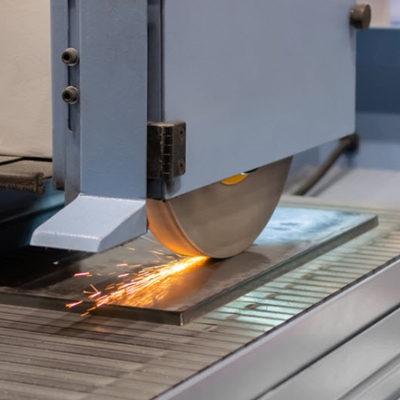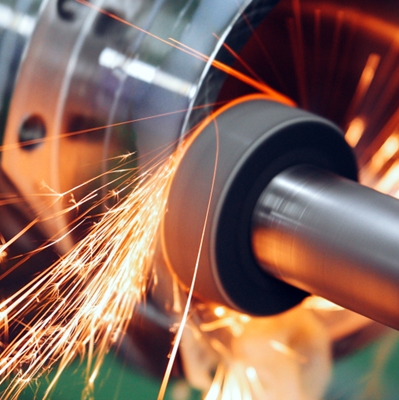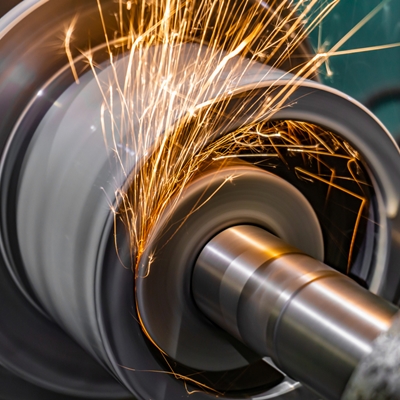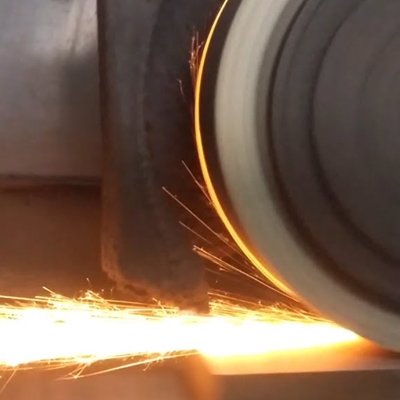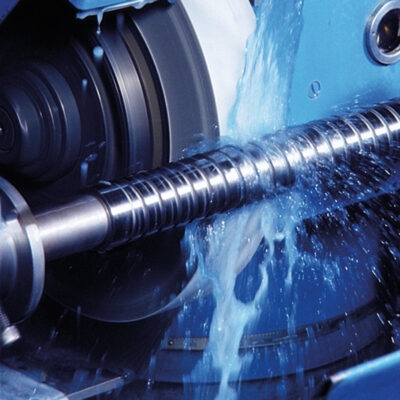Surface Grinding
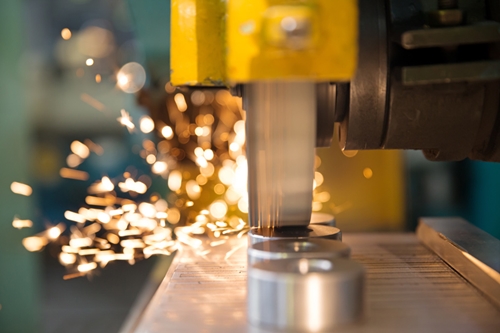
Surface grinding is a precision machining process used to produce smooth, flat surfaces on a workpiece. It involves the removal of material using a rotating abrasive wheel to achieve tight tolerances and fine surface finishes. Typically employed for ferrous metals, surface grinding enhances part flatness, parallelism, and surface quality. The process begins with securing the workpiece on a magnetic chuck or fixture, followed by the movement of the abrasive wheel across the material. Water-based coolant is often used to control heat and minimize friction. Surface grinding finds applications in manufacturing industries for creating precise, dimensionally accurate components, contributing to the overall quality of machined parts.
Blade Grinding
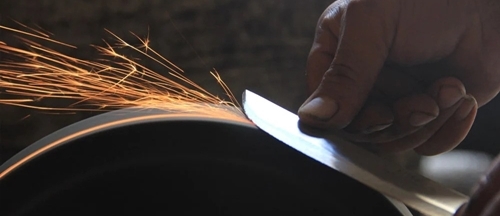
Blade grinding is a specialized process essential for refining the cutting edges of blades, such as those found in knives, razors, or industrial cutting tools. The objective is to achieve a sharp, durable edge with optimal geometry. Various grinding methods, like belt, wheel, or flat grinding, are employed based on the blade's design and material. Precision is crucial to ensure a keen cutting edge, and cooling systems are often used to prevent overheating. Blade grinding plays a pivotal role in crafting functional and efficient cutting tools.
Cylindrical Grinding

Cylindrical grinding is a precision machining process that involves the removal of material from the external surface of a cylindrical workpiece. This technique is widely used in manufacturing industries to produce components with high precision, tight tolerances, and excellent surface finishes.
The primary goal of cylindrical grinding is to create a cylindrical shape or improve the roundness, concentricity, and surface finish of a part. The process involves a rotating abrasive wheel, known as a grinding wheel, that traverses along the external surface of the cylindrical workpiece. The workpiece is usually held in a chuck or on centers and rotated as the grinding wheel moves across its surface.
One of the key advantages of cylindrical grinding is its ability to achieve high precision and tight tolerances. This makes it suitable for applications where precise dimensions and surface finishes are critical, such as in the production of shafts, cylinders, and various machine components.
The cylindrical grinding process can be classified into two main types: plunge grinding and traverse grinding. In plunge grinding, the grinding wheel moves radially into the workpiece, producing a cylindrical surface with a precise diameter. Traverse grinding, on the other hand, involves the continuous movement of the grinding wheel parallel to the axis of the workpiece, creating a cylindrical shape as it progresses.
Cylindrical grinding machines come in various configurations, including center-type and centerless grinders. Center-type cylindrical grinders use centers to support the workpiece and are well-suited for individual or small-batch production. Centerless grinders, on the other hand, do not require centers and are particularly efficient for high-volume production, as they can grind multiple workpieces simultaneously.
Precision is crucial in cylindrical grinding, and factors such as wheel selection, machine setup, and dressing techniques play vital roles in achieving the desired results. The grinding wheel is often made of abrasive materials like aluminum oxide or silicon carbide and comes in various grit sizes to achieve different surface finishes.
In summary, cylindrical grinding is a versatile and precise machining process widely employed in the manufacturing industry. It allows for the production of components with accurate dimensions, excellent surface finishes, and enhanced mechanical properties, making it a fundamental technique in the fabrication of various mechanical parts and components.
